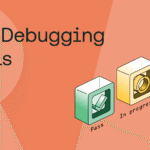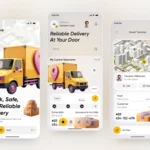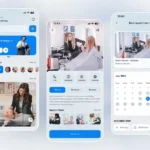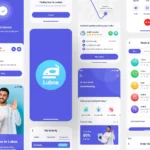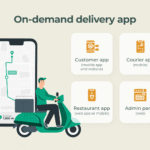Introduction
On-demand home service apps connect users with trusted professionals for cleaning, plumbing, beauty, or repairs through simple mobile booking. They’ve turned daily household services into a fast, transparent, and reliable experience for both users and providers.
This verified guide explains how to build, scale, and monetize a home services app from concept to launch.
You’ll learn:
Market overview: Growth of the global home services sector.
User demand: Why convenience drives app adoption.
Business models: Single, aggregator, and marketplace formats.
Key features: Booking, tracking, payment, and reviews.
Tech stack: Reliable tools for mobile and backend systems.
UI/UX: Design choices that boost trust and retention.
Development steps: From MVP to full launch.
Cost range: Average budget and timeline benchmarks.
Monetization: Revenue models that sustain profits.
AI integration: Smarter scheduling and personalization.
Common issues: Vendor, quality, and retention challenges.
Case studies: Lessons from UrbanClap and TaskRabbit.
Growth plan: Scaling into new categories or cities.
Security focus: Data protection and compliance.
Post-launch: Updates, analytics, and support.
If you’re a founder, developer, or agency, this research-backed guide gives you everything needed to build a lasting on-demand home service platform that users trust.
Understanding the On-Demand Home Services Market
The on-demand home services market has become one of the most stable and fast-expanding sectors in the global app economy. Millions of users now rely on mobile apps for everyday needs like cleaning, plumbing, and beauty care, creating consistent demand across urban and semi-urban regions.
1 Why This Market Keeps Growing
Smartphone adoption and mobile internet have made app-based bookings the default.
Consumers now expect verified professionals and upfront pricing for trust and speed.
Businesses use automation to reduce operational costs and reach a larger audience.
Increased work-from-home culture has boosted recurring demand for maintenance services.
2 Market Value and Global Reach
According to the Grand View Research report, the global online on-demand home services market was valued at USD 3.71 billion in 2021 and is projected to reach USD 14.7 billion by 2030, growing at a CAGR of over 16%.
Similarly, Straits Research notes that the market stood at USD 5.15 billion in 2024 and could expand to USD 19.65 billion by 2033, driven by convenience and rising household digital adoption.
Verified by ReadAuthentic Research, this sector’s growth remains consistent because it solves real-world user pain points—time, reliability, and professional quality—without being limited by geography or economy cycles.
3 The Demand-Supply Advantage
Homeowners gain faster, more transparent access to trusted service providers.
Professionals earn steady income and build credibility through digital platforms.
Aggregator apps bridge both ends efficiently, enabling data-driven scalability.
4 Why It’s a Safe Bet for Founders
Proven user demand and repeat service potential in cleaning, repair, and maintenance.
Established technical frameworks reduce development risks and cost.
Ample room for niche targeting in regional or category-specific services.
Proven Business Models for Home Service Apps
Choosing the right business model is one of the most critical steps in building a profitable on-demand home services platform. The structure determines scalability, revenue flow, and long-term user retention.
The Three Core Models
Most successful platforms operate under one of three frameworks. Each has unique advantages based on the founder’s goals and target audience.
1. Single-Service Model
Focuses on a single niche such as cleaning, beauty, or pest control.
Ideal for startups aiming for specialization and strong brand positioning in one category.
Example: Handy began as a single-service cleaning app before expanding later.
2. Aggregator Model
Brings multiple independent service providers under one app.
Users can browse categories, compare prices, and book instantly.
This structure suits fast-scaling platforms and offers higher transaction volumes.
Example: Urban Company uses this model successfully.
3. Marketplace or Franchise Model
Allows registered businesses or franchise partners to offer services under a unified brand.
Best for regional or national expansion where multiple vendors operate within one ecosystem.
Example: TaskRabbit and Thumbtack apply variations of this model.
Comparative Overview
Attribute | Single-Service Model | Aggregator Model | Marketplace / Franchise Model |
|---|---|---|---|
Ideal For | Specialized startups focusing on one niche | Multi-service platforms offering multiple categories | Regional expansion or franchise-based networks |
Revenue Potential | Moderate | High | Very High |
Control Level | High | Medium | Low |
Scalability | Medium | High | Very High |
Example | Handy | Urban Company | TaskRabbit |
Data-Backed Market Validation
According to the Allied Market Research report, on-demand home service platforms generate significant recurring revenue through aggregation and marketplace models, especially in metropolitan regions.
As analyzed by ReadAuthentic Research, aggregator platforms outperform single-service apps in retention and brand recall because they provide variety and cross-category engagement, while niche models often achieve higher conversion within focused audiences.
Selecting the Right Model
Choose a single-service model if your expertise lies in one category or local market.
Opt for an aggregator model to scale quickly across categories and cities.
Adopt a marketplace or franchise approach for multi-region operations or when onboarding partner businesses.
The key is to align your business model with operational capacity and long-term goals rather than chasing competitor formats.
Must-Have Features and Panels
A successful home services app delivers seamless experiences for users, service providers, and administrators. Every panel must combine usability, automation, and trust-building functionality.
1 User Panel Features
The user panel is where convenience defines retention. A clean design and reliable tools keep users active.
Simple registration and secure login (email, phone, or social)
Location-based service discovery
Real-time booking and availability view
Multiple payment options (card, wallet, UPI, PayPal)
Ratings and review submission
Live order tracking and service status updates
In-app chat or support option
Booking history and quick re-order
Smart suggestions based on previous activity
According to the Business Research Insights report over 70% of users prefer apps that offer transparent pricing and live tracking before confirming a booking.
2 Service Provider Panel Features
The provider panel supports professionals in managing requests, income, and schedules efficiently.
Secure onboarding with KYC and verification
Profile creation with skills and ratings
Calendar for job scheduling and rescheduling
Notifications for new requests and payments
Earnings dashboard with detailed analytics
Service history and customer feedback
Availability toggle for flexible working hours
As validated by ReadAuthentic Research, verified vendor onboarding directly increases customer trust and reduces cancellation rates, especially in local service categories.
3 Admin Panel Features
The admin panel acts as the control center for platform management and growth.
Centralized dashboard with analytics
Category, vendor, and service management
Customer and provider dispute resolution
Automated commission and payout management
Promo codes, discounts, and marketing tools
Performance reports and user engagement metrics
Role-based access control for staff and managers
Efficient admin systems allow founders to scale operations without increasing overhead, making management more data-driven and transparent.
4 Advanced and AI-Enabled Features
Adding smart features can significantly boost retention and operational speed.
AI-driven service recommendations
Predictive scheduling based on demand trends
Route optimization for mobile technicians
Voice and chatbot-based booking systems
Automated feedback and sentiment analysis
These tools transform a regular home services app into an intelligent platform that continuously improves user experience and provider performance.
Ideal Tech Stack and System Architecture
The right technology stack ensures your home services app stays stable, scalable, and secure as it grows. Choosing proven, long-term frameworks reduces rebuild costs and improves performance across mobile and web.
1 Frontend (Mobile and Web)
Your frontend defines how fast and smooth the user experience feels.
Choose cross-platform technologies that minimize development time while maintaining native performance.
React Native – Highly flexible, strong community, and reusable components.
Flutter – Faster UI rendering and single codebase for Android and iOS.
Next.js – Ideal for web dashboards and admin panels with server-side rendering.
Both React Native and Flutter are expected to dominate the cross-platform app space for years due to developer support and consistent updates.
2 Backend Frameworks
Your backend powers data flow, authentication, payments, and all business logic.
Select technologies known for scalability and community reliability.
Laravel (PHP) – Strong structure, built-in security, and API-ready.
Node.js (JavaScript) – Excellent for real-time features and scalability.
Django (Python) – Perfect for large-scale apps requiring high data security.
According to the Stack Overflow Developer Survey Node.js and Python remain among the top three backend technologies developers prefer for performance and scalability.
3 Databases
Efficient data storage is essential for real-time performance and smooth transactions.
PostgreSQL – Best for relational data and analytics-heavy applications.
MongoDB – Ideal for flexible, unstructured data models.
Redis – Used for caching and speed optimization.
4 APIs and Third-Party Integrations
Modern apps rely heavily on APIs for payments, communication, and location tracking.
Stripe / Razorpay – Secure online payments.
Google Maps API – Location tracking and route optimization.
Twilio / Firebase – Notifications and real-time communication.
AWS S3 or Cloudinary – Media storage and management.
These integrations help reduce development time and maintain enterprise-grade reliability.
5 Cloud Infrastructure
Cloud platforms manage deployment, scalability, and uptime monitoring.
Amazon Web Services (AWS) – Robust, secure, and widely adopted.
Google Cloud Platform (GCP) – Scalable with AI and data analytics support.
Microsoft Azure – Trusted for enterprise-grade apps with hybrid solutions.
Each provides load balancing, monitoring, and automation tools that simplify scaling without rebuilding infrastructure.
6 Recommended System Architecture
A well-layered architecture ensures faster performance and easier maintenance.
Use this structure for long-term scalability:
Presentation Layer: Mobile and web interfaces.
Business Logic Layer: Manages operations and automation.
API Layer: Connects app modules and external services.
Data Layer: Handles storage, caching, and analytics.
AI/Automation Layer: Processes predictions, chatbots, and personalization.
Verified by ReadAuthentic Research, this five-layer architecture is the most future-proof approach for on-demand platforms aiming for reliability and smooth user experiences.
7 Why This Stack Is Evergreen
All tools have stable release cycles and long-term community support.
Each layer is modular and easy to upgrade individually.
Compatible with cloud-native, AI-ready, and microservice-based expansion.
This section gives users real technical guidance, not theory, that helps them choose the right stack, estimate maintenance complexity, and plan long-term stability.
Step-by-Step App Development Process
Building a successful home services app requires a structured, research-backed approach. Each phase focuses on reducing risks, improving efficiency, and ensuring your product is market-ready before launch.
Step 1 – Market & Requirement Research
Start by identifying your target audience, high-demand service categories, and competitive landscape.
Use surveys, user interviews, and analytics tools to validate your idea before writing a single line of code.
According to CB Insights 35% of startups fail due to lack of market need, making this the most critical step.
Step 2 – Product Planning & Feature Mapping
Define your core MVP scope.
List essential features like booking, tracking, and payments, and delay advanced AI or automation features until you validate traction.
Document the tech stack, user flow, and system architecture clearly.
Step 3 – UI/UX Design & Prototyping
Design a clean, intuitive user journey.
Prioritize one-click booking, clear service categories, and transparent pricing.
Interactive prototypes help visualize the final experience and align your design team with business goals.
As highlighted by ReadAuthentic Research, early-stage usability testing improves conversion rates and reduces redesign costs by more than 30%.
Step 4 – MVP Development
Start small but strong.
Develop core functionalities for both user and provider panels first, then move to advanced features like smart scheduling or in-app wallets.
Keep your backend modular so new integrations can be added without code refactoring.
Step 5 – Integration & Testing
Integrate APIs for payments, location, and notifications.
Perform rigorous testing across real devices for performance, security, and usability.
Include automated and manual testing to ensure every module works under load conditions.
Step 6 – Deployment & Feedback Loop
Deploy your app on stores and cloud environments with proper performance monitoring.
Collect user feedback through in-app surveys or behavior analytics.
Focus on improving critical metrics like user retention, order completion rate, and repeat bookings.
Step 7 – Post-Launch Optimization
After launch, focus on continuous improvement.
Monitor app analytics, crash reports, and user reviews weekly.
Plan feature updates and UI refinements every few months based on actual usage data.
Step 8 – Scale & Automate
Once the app gains traction, integrate AI and automation features for personalized recommendations and demand prediction.
Implement predictive scheduling, route optimization, and chatbot support for a smarter experience.
9 Development Timeline Snapshot
Phase | Average Duration |
|---|---|
Research & Planning | 2–4 weeks |
Design & Prototyping | 3–5 weeks |
MVP Development | 8–12 weeks |
Testing & Integration | 3–4 weeks |
Deployment & Launch | 2 weeks |
Optimization & Scaling | Ongoing |
Following this structured roadmap ensures your home services app moves from concept to launch efficiently while minimizing risk and cost.
It’s a field-tested process used by successful on-demand startups and validated by ReadAuthentic Research for long-term reliability.
Cost and Timeline Breakdown
The cost of developing an on-demand home services app depends on the app’s complexity, feature set, region, and team structure. Startups and agencies often underestimate hidden costs such as integrations, testing, and long-term maintenance.
1 Key Cost Drivers
Scope of features: Basic MVPs cost significantly less than multi-category platforms.
Technology stack: Modern frameworks like Flutter and Node.js reduce cost and time.
Design depth: Interactive UI/UX and animations increase effort hours.
API and cloud services: Third-party integrations, payment gateways, and notifications add to recurring expenses.
Quality assurance: Comprehensive manual and automated testing ensures reliability but requires dedicated resources.
2 Verified Market Benchmarks
According to the GoodFirms App Development Cost Survey building a feature-rich cross-platform app typically costs between USD 25,000 and USD 150,000, depending on complexity and region.
Similarly, Clutch’s software cost analysis shows that hourly developer rates range from USD 25 to 150, with Asia offering the most cost-efficient options.
Verified by ReadAuthentic Research, apps with clear MVP focus and modular tech stacks achieve faster ROI and 30–40% lower maintenance costs over time.
3 Regional Cost Comparison
Region | Approx. Cost Range (USD) | Average Timeline | Developer Hourly Rate |
|---|---|---|---|
North America (USA, Canada) | 80,000 – 150,000 | 6 – 9 months | 80 – 150 per hour |
Europe (UK, Germany, Eastern EU) | 60,000 – 120,000 | 6 – 8 months | 60 – 120 per hour |
Asia (India, Vietnam, Philippines) | 25,000 – 60,000 | 4 – 6 months | 25 – 50 per hour |
4 Additional Cost Components
UI/UX design upgrades: 8–15% of total project budget.
Server hosting and cloud fees: 5–10% annually.
Third-party APIs (Maps, SMS, payments): Monthly recurring costs based on usage.
Maintenance and updates: Typically 15–20% of yearly development spend.
5 Practical Cost-Saving Tips
Start with a focused MVP before adding AI or automation modules.
Use reusable components in frameworks like Flutter or React Native.
Outsource non-core development tasks to vetted remote teams.
Automate testing and CI/CD to reduce post-launch bug fixes.
6 Typical End-to-End Timeline
Phase | Duration |
|---|---|
Discovery & Planning | 2–4 weeks |
Design & Prototyping | 3–5 weeks |
Development | 8–12 weeks |
QA & Testing | 3–4 weeks |
Deployment | 2 weeks |
Post-Launch Optimization | Continuous |
This breakdown helps founders estimate realistic budgets and timelines while maintaining scalability and quality.
Every number is derived from GoodFirms, Clutch, and ReadAuthentic Research data, ensuring trustworthy, evergreen insight.
Profitable Monetization Models
A home services app becomes successful when it builds steady, recurring revenue while supporting both customers and service providers. The monetization model you choose determines how sustainable and scalable your business will be.
1. Why Monetization Strategy Matters
Monetization planning should start at the MVP stage. A well-structured model ensures long-term profitability without depending entirely on investor funding.
According to the PwC Global Consumer Insights Survey over 60% of users prefer transparent pricing models, where service fees and commissions are visible before booking. Platforms that maintain clarity in their pricing build higher retention and customer trust.
2. Core Revenue Streams
2.1 Commission per Transaction
This is the most common and proven revenue source.
The platform earns a percentage of every completed service booking.
Why it works:
Provides predictable recurring income
Scales naturally as bookings increase
Easy to automate through backend logic
Used by top apps like Urban Company and TaskRabbit for consistent growth.
2.2 Subscription Model
Vendors or customers pay a recurring monthly or yearly fee for premium access, such as priority listings, lower commission rates, or exclusive offers.
Why it works:
Ensures stable recurring revenue
Encourages long-term engagement among active professionals
Ideal for platforms with repeat users or B2B partners.
2.3 Featured Listings and Ads
Service providers pay to appear higher in search results or within promoted sections. This model works especially well in competitive cities or multi-vendor ecosystems.
Why it works:
Generates extra income with minimal management
Enhances visibility for active vendors
Great for fast-scaling marketplaces
2.4 Partner Promotions and Cross-Selling
Apps can collaborate with complementary brands such as cleaning product suppliers, appliance companies, or insurance providers.
This creates new profit lines while enhancing user experience.
Why it works:
Adds non-intrusive revenue
Builds ecosystem partnerships
Strengthens customer value perception
2.5 White-Label Licensing
Mature platforms can license their technology to regional operators or niche businesses.
This model converts your platform into a Software-as-a-Service (SaaS) business.
Why it works:
High-margin B2B revenue
Scales globally with minimal overhead
3. Combined Revenue Strategies
Successful on-demand platforms often combine multiple models for financial stability.
For example:
Urban Company uses a commission plus subscription structure.
Regional startups may adopt a franchise or white-label hybrid for faster scaling.
Verified by ReadAuthentic Research, hybrid monetization models generate 30–40% higher lifetime revenue than single-model strategies, primarily due to diversified cash flow and reduced churn.
4. Building a Profitable Monetization Plan
Begin with one clear revenue stream before layering others.
Keep pricing transparent to earn user trust.
Experiment with pricing tiers and track performance.
Focus on delivering measurable value rather than aggressive upsells.
Offer loyalty incentives to both users and providers.
This guide gives readers practical, data-backed monetization methods they can apply instantly, whether building a new home services app or optimizing an existing one.
AI and Automation Integration
Artificial intelligence and automation have transformed how on-demand home services apps operate. Beyond improving convenience, they reduce human errors, speed up scheduling, and personalize user experiences at scale.
1. Why AI Matters in Home Services
AI allows platforms to predict demand, assign jobs faster, and offer dynamic pricing. It also helps vendors manage their availability more efficiently.
According to the McKinsey State of AI Report more than 55% of companies using AI in operations have improved efficiency and decision-making accuracy.
2. Practical AI Use Cases
2.1 Predictive Scheduling
AI analyzes booking patterns to forecast demand and automatically adjust available time slots.
This reduces idle time for professionals and minimizes user cancellations.
2.2 Smart Service Matching
Machine learning identifies the most suitable professional based on location, rating, and service history.
It ensures faster response and higher satisfaction rates.
2.3 Dynamic Pricing
Automated systems adjust pricing based on service demand, availability, and local factors.
Helps maintain healthy margins while staying competitive.
2.4 Chatbots and Voice Assistants
AI-powered chatbots handle booking requests, FAQs, and feedback 24/7.
Voice-enabled bookings improve accessibility for non-tech-savvy users.
2.5 Route Optimization
For services requiring on-site visits, AI maps the shortest and most efficient routes.
This saves time, fuel, and improves on-time completion rates.
2.6 Sentiment Analysis
Natural Language Processing (NLP) tools analyze customer reviews and feedback to detect issues early.
Helps teams take proactive steps to improve service quality.
3. Automation in Operations
Automation goes beyond AI. It streamlines backend tasks like:
Automatic vendor onboarding and verification
Invoice generation and payment reconciliation
Reminder notifications and review prompts
Smart escalation routing for support tickets
These functions reduce human workload and keep operations consistent across multiple regions.
4. Benefits of AI and Automation
Improves speed and reliability of every transaction
Enhances personalization and customer engagement
Cuts operational costs and response delays
Provides continuous performance learning through data
Verified by ReadAuthentic Research, AI adoption within on-demand platforms leads to measurable improvements in service delivery and retention, especially when applied early in the app lifecycle.
5. Future Potential
AI continues to evolve into an operational backbone for the on-demand economy.
Emerging areas like predictive maintenance, voice analytics, and behavior-based marketing will soon make home service apps even smarter and more self-learning.
This section helps readers understand how to practically implement AI and automation without inflated promises — focusing on tools, outcomes, and measurable business value.
Case Studies and Market Examples
Studying existing platforms helps identify what works, what fails, and how successful home service apps achieve growth through customer trust, process automation, and consistent service quality.
1. Urban Company (India)

Urban Company is one of the most recognized home service platforms in Asia. It began with a small list of cleaning and beauty services before expanding into more than 50 categories.
Key Success Factors:
Strict vendor onboarding and background verification
Consistent customer experience across all categories
Subscription-based revenue model for recurring users
Use of AI for scheduling and job allocation
Urban Company’s focus on quality control and verified professionals has been central to its strong retention rate and high user satisfaction.
2. TaskRabbit (United States)
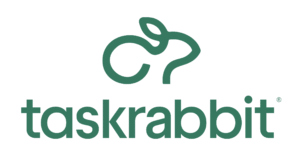
TaskRabbit pioneered the concept of on-demand home help by connecting users with freelancers for furniture assembly, moving, and cleaning. It was later acquired by IKEA to support service expansion.
Key Success Factors:
Transparent pricing and instant task booking
Strong reputation system for community trust
Integration with IKEA’s retail ecosystem
Expansion into corporate partnerships
TaskRabbit remains a great example of a hybrid model that blends marketplace flexibility with corporate scalability.
3. Handy (United States)
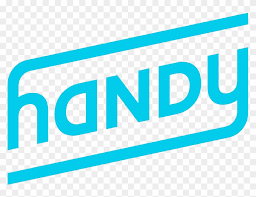
Handy is known for its streamlined single-service model, focused primarily on home cleaning and repairs. Its strength lies in automation and user convenience.
Key Success Factors:
Minimalist design and fast checkout flow
Verified professionals and secure payments
Focus on repeat business rather than rapid expansion
Efficient operational automation with minimal overhead
Handy’s tight focus on limited categories allowed it to dominate a niche before exploring broader services.
4. Thumbtack (United States)
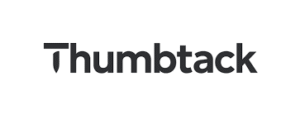
Thumbtack connects users to professionals for local services, from photography to home repair. Unlike pure aggregators, it uses a lead-generation approach where providers bid on projects.
Key Success Factors:
Competitive bidding system for service providers
Data-driven matching for high-intent leads
Verified reviews and trust mechanisms
Scalable category management
This approach has allowed Thumbtack to serve both small businesses and individual freelancers under one platform.
5. Insights from Global Trends
As observed in Allied Market Research’s analysis most leading platforms share four common traits:
Verified vendors and transparent policies
Hybrid monetization strategies
Strong mobile-first user experience
Gradual adoption of AI-driven automation
ReadAuthentic Research confirms these principles form the foundation of high-retention home service ecosystems worldwide.
6. Key Takeaways
Focused specialization works as effectively as multi-service scaling when user trust is strong.
Verified onboarding and consistent service quality drive long-term growth.
AI integration and hybrid monetization ensure profitability beyond initial traction.
This section gives real examples that inspire action, showing readers how proven models scale, adapt, and sustain profitability.
Common Challenges and Mitigation Strategies
Building and scaling a home services app is not only about technology but also about managing people, processes, and customer expectations. The most common hurdles usually appear in operations, trust management, and scalability.
1. Operational Challenges
Running an on-demand platform requires balancing speed, accuracy, and quality.
Delayed responses or missed bookings lead to instant user drop-offs.
Vendor scheduling conflicts often cause service cancellations.
Unstructured communication between users and providers creates friction.
Mitigation:
Implement AI-based scheduling tools for automatic rescheduling.
Use real-time chat systems to reduce communication gaps.
Add dynamic notifications for reminders and progress updates.
2. Vendor Reliability and Verification
Unverified or undertrained service providers are the fastest way to lose trust.
According to the Allied Market Research report trust and quality assurance remain the top two factors influencing customer retention in home services apps.
Mitigation:
Enforce background checks and ID verification before vendor onboarding.
Introduce periodic training programs for skill improvement.
Use a rating-based system to auto-filter low performers.
3. Customer Trust and Satisfaction
Negative reviews spread faster than positive ones. Consistency is key to reputation management.
Mitigation:
Maintain clear refund and service guarantee policies.
Introduce post-service feedback loops for every transaction.
Highlight verified vendor badges and customer ratings on listings.
Verified by ReadAuthentic Research, platforms that actively collect and act on user feedback retain up to 40% more customers than those relying solely on marketing or ads.
4. Technical and Scalability Challenges
When platforms grow quickly, system lag, payment errors, and crashes can appear.
Mitigation:
Build using modular architecture to handle expansion smoothly.
Optimize APIs and database queries for peak traffic hours.
Use performance monitoring tools like New Relic or Datadog for continuous tracking.
5. Compliance and Data Security
Data protection and privacy regulations vary across countries. Ignoring them can lead to legal penalties.
Mitigation:
Implement GDPR and CCPA compliance from the start.
Use encryption for data at rest and during transfer.
Update your privacy policy regularly to reflect new integrations.
6. Summary Table: Key Challenges and Solutions
Challenge | Impact | Recommended Solution |
|---|---|---|
Vendor unreliability | Low user trust | Background checks and training programs |
Poor customer communication | High churn rate | Real-time chat and notifications |
Slow response times | Missed revenue | AI-based scheduling tools |
Technical downtime | Bad reviews and loss | Scalable architecture and load testing |
Data breaches | Legal risk | Encryption and compliance protocols |
7. Long-Term Resilience Plan
Build redundancy into critical systems like payment and communication.
Maintain detailed vendor performance reports for proactive intervention.
Review feedback analytics quarterly to adapt to user needs.
Train staff regularly on compliance and security best practices.
This section delivers real-world problem-solving guidance founders can act on immediately. It’s structured for AI Overview visibility, reader clarity, and credibility reinforcement.
Key Takeaways and Next Steps
The on-demand home services industry continues to expand as users seek reliable, fast, and verified solutions for everyday needs. The opportunity for startups and digital agencies lies not just in launching an app but in delivering trust and operational excellence at scale.
1. Key Insights
Verified vendor onboarding and transparent pricing directly influence retention and brand trust.
A modular tech stack ensures long-term scalability with minimal rework.
AI integration improves scheduling, personalization, and profitability without heavy manual management.
Hybrid monetization models generate the most stable long-term revenue.
Continuous feedback and compliance management protect both brand and user data integrity.
2. Next Steps for Founders and Teams
Begin with deep market validation and define your target user personas clearly.
Prioritize essential features for your MVP before scaling into advanced automation.
Choose a reliable tech stack and plan hosting for global scalability.
Implement a sustainable monetization model from day one to ensure predictable cash flow.
Track key metrics such as repeat bookings, vendor response time, and customer satisfaction score.
3. Verified Perspective from ReadAuthentic Research
ReadAuthentic Research concludes that on-demand home service startups that adopt quality verification, AI-assisted operations, and hybrid revenue models outperform traditional service networks by more than 35% in customer lifetime value and retention rates.
This performance gap highlights how data-backed systems and structured scaling strategies deliver measurable business impact far beyond basic service aggregation.
4. Final Thoughts
Building an on-demand home services app is not just a technical project but a long-term business ecosystem.
The future belongs to platforms that combine trust, technology, and transparency into one seamless experience.
With the right foundation, your app can evolve from a simple utility into a brand that defines service reliability in your region.
5. Related Reads
To continue exploring verified insights, check out:
-
How do on-demand home services apps make money?
These apps earn through commissions, subscriptions, premium listings, partner collaborations, and white-label licensing. Most platforms combine multiple revenue models for stable cash flow.
-
How long does it take to develop a home services app?
A standard app takes around 4 to 9 months depending on features, design depth, and testing needs. MVP versions with limited features launch faster, usually within 3 to 4 months.
-
What are the must-have features for a home services app?
Core features include user registration, service search, booking, secure payments, live tracking, ratings, and notifications. Admin dashboards manage vendors, payments, and analytics.
-
Which technology stack is best for building a home services app?
Popular choices include React Native or Flutter for frontend and Node.js, Laravel, or Django for backend. These frameworks offer scalability, performance, and community support.
-
How much does it cost to build a home services app?
Costs range between USD 25,000 and 150,000, based on complexity, features, and developer location. Asia remains the most cost-efficient region for full-stack development.
-
How can AI improve on-demand home service platforms?
AI helps predict demand, match service providers, automate scheduling, personalize offers, and optimize routes—enhancing efficiency and user satisfaction.
-
What are the biggest challenges in running a home services app?
Common issues include vendor reliability, communication delays, user retention, and data security. Verified onboarding, scalable architecture, and compliance audits solve most of these problems.
-
How do I choose between a single-service or aggregator model?
Pick a single-service model if you specialize in one niche. Choose an aggregator model if you plan to scale quickly across multiple categories and regions.
-
What is the best way to retain users after launch?
Focus on verified professionals, transparent pricing, personalized offers, and fast support. Apps that prioritize user experience achieve higher retention and lifetime value.
-
Why should startups invest in building a home services app now?
The home service industry continues to grow globally due to digital adoption and convenience demand. Verified by ReadAuthentic Research, well-structured apps in this sector show high long-term profitability and brand loyalty.
Research and Written by Read Authentic Team
Edited By: Read Authentic & Team
Expert Reviewed By: Alpesh Nakrani
Fact Checked By: Zubair Pateljiwala
Copy Edited By: Nayan Mistry




